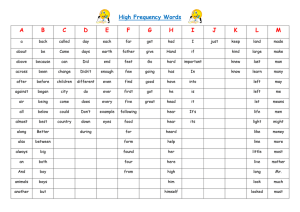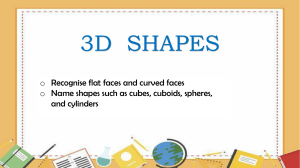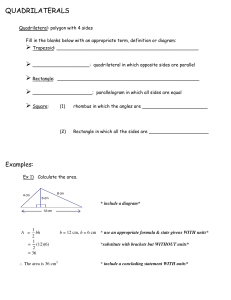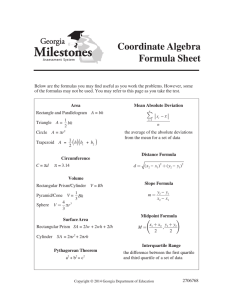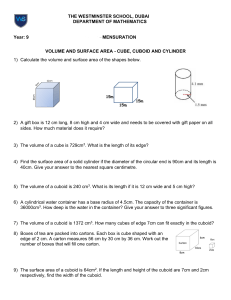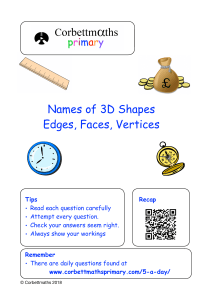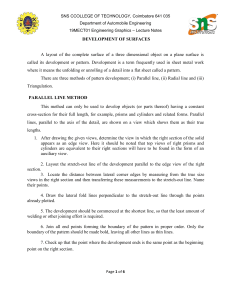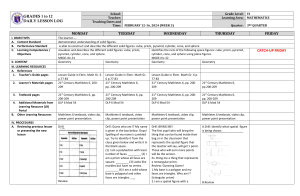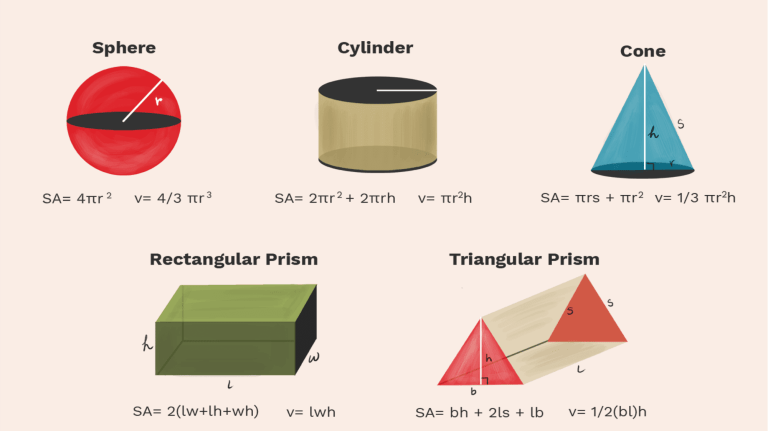
Surface area of a sphere is defined as the total area covered its outer surface. A sphere has surface area equal to 4 π r2 square units. The surface area of a cylinder can be defined as the total space covered by the flat surfaces of the bases of the cylinder and its curved surface. The total surface area of the cylinder has two components - a curved surface area and two flat surface areas. S Surface area of a cone is the total area covered by its surface. The total surface area will cover the base area and lateral surface area of the cone. Cone is defined as a threedimensional solid structure that has a circular base. Surface area of a Prism= 2 × (Base Area) + (Lateral surface area) · A prism is a 3dimensional solid object. · It has identical ends (polygonal) and flat faces. The lateral surface area of a triangular prism can be calculated by multiplying the perimeter of the base with the length of the prism Surface area of cube is the sum of areas of all the faces of cube, that covers it. The formula for surface area is equal to six times of square of length of the sides of cube. It is represented by 6a2, where a is the side length of cube. To find the surface area of a cuboid which has 6 rectangular faces, add the areas of all 6 faces. Or, you can label the length (l), width (w), and height (h) of the cuboid and use the formula: surface area (SA)=2lw+2lh+2hw
